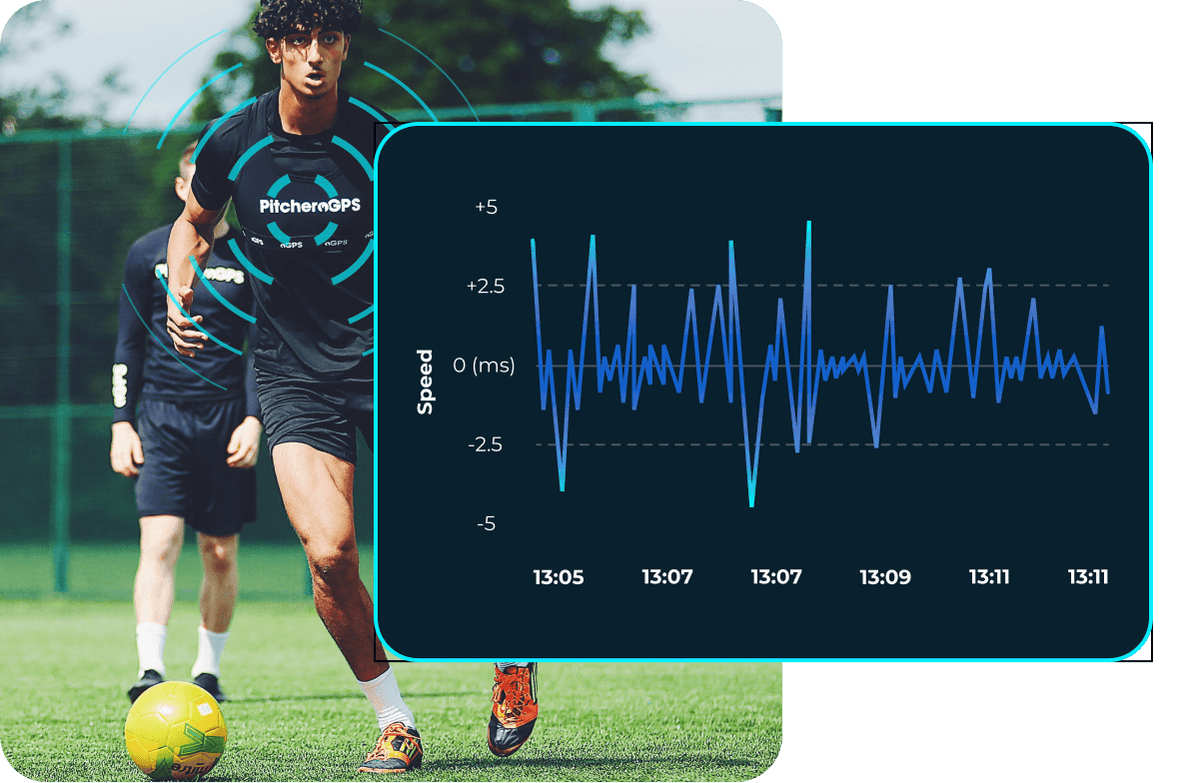
Football is not just a game played on the field; it’s a complex ecosystem where each player possesses unique physical and technical characteristics. In the modern world of technology, wearable trackers have become indispensable tools for collecting and analyzing player data, providing coaches and analysts with valuable insights to optimize their development. Let’s delve deeper into how this data helps unearth potential and enhance player performance.
Physical Conditioning: Precision Training for Peak Performance
Wearable trackers offer comprehensive insights into players’ physical condition, including heart rate, activity levels, and even sleep quality. These insights not only help coaches assess current player form but also identify trends and patterns that may lead to injuries or overexertion.
A study conducted at Cardiff University revealed that analyzing data from wearable trackers enables coaches to fine-tune training programs more accurately, considering each player’s individual needs and characteristics. This leads to improvements in endurance, strength, and speed, ultimately enhancing overall on-field performance.
Technical Analysis: Delving into Skill Sets

Unlocking Players’ Potential
One of the most intriguing aspects of using wearable trackers is their ability to analyze players’ technical aspects of the game. Thanks to inertial sensors embedded in the trackers, movements, positioning, and ball interactions of players can be tracked on the field.
Research conducted at the Massachusetts Institute of Technology found that data gathered from wearable trackers allows analysts to intricately examine each player’s game technique. This includes decision-making processes, passing accuracy, reaction speeds, and many other aspects of the game. Based on this data, coaches can propose personalized training programs aimed at improving each player’s technical skills.
The Future of Football: Integration and Advancement
As technology continues to evolve, the use of wearable trackers in football is becoming increasingly prevalent. Professional clubs worldwide are already integrating these devices into their training programs and tactical strategies.
However, to fully realize the potential of wearable trackers, not only technological integration but also cultural change within clubs is necessary. Coaches, players, and analysts must be prepared to harness this data to build more effective training and gameplay strategies.
In conclusion, wearable trackers represent not just a new technology but a powerful tool for football player development. With their help, coaches and analysts can gain a deeper understanding of each player’s potential and assist them in reaching new heights in their careers.

Unlocking Potential: How Wearable Trackers Are Revolutionizing Football
Football, as one of the most popular sports globally, has always been driven by the pursuit of excellence and performance enhancement. In recent years, the advent of wearable technology has taken this pursuit to new heights, particularly in the realm of player development. Wearable trackers, equipped with advanced sensors and analytical algorithms, have emerged as invaluable assets in collecting a wealth of data on players’ physical and technical attributes. This article explores the transformative role of wearable trackers in football development, delving into their multifaceted contributions and implications for the future of the sport.
Enhancing Physical Conditioning: From Data to Performance Insights
Gone are the days of relying solely on subjective assessments or traditional fitness tests to gauge players’ physical readiness. Wearable trackers offer a holistic view of players’ fitness levels, capturing real-time data on metrics such as heart rate variability, exertion levels, and recovery patterns. This wealth of information enables coaches and sports scientists to tailor training regimes with unprecedented precision, optimizing workload distribution and injury prevention strategies.
Furthermore, wearable trackers facilitate longitudinal monitoring, allowing for the identification of individual performance trends and the early detection of potential injury risks. By integrating these insights into periodization models and recovery protocols, clubs can maintain peak player performance throughout grueling seasons and minimize the risk of overtraining or burnout.
Elevating Technical Proficiency: Insights into the Art of Play
In addition to physical metrics, wearable trackers provide invaluable insights into players’ technical proficiency and on-field decision-making. Through the use of sophisticated motion sensors and machine learning algorithms, these devices capture intricate details of player movements, ball interactions, and spatial awareness during training sessions and competitive matches.
This granular data not only facilitates objective performance evaluations but also enables targeted interventions to address skill deficiencies and optimize tactical execution. By correlating technical metrics with match outcomes and positional requirements, coaches can tailor training drills and positional strategies to maximize each player’s impact on the field.
Maximizing Managerial Strategies: From Data-driven Decisions to Competitive Advantage
Beyond individual player development, wearable tracker data holds immense potential for informing broader managerial strategies and game-day decisions. By aggregating and analyzing player performance metrics across entire squads, coaches can identify tactical trends, opposition vulnerabilities, and optimal lineup configurations.
Moreover, the integration of wearable tracker data with video analysis platforms enables coaches to provide real-time feedback and tactical adjustments during matches, empowering players to adapt to evolving game scenarios effectively. This synergy between data-driven insights and managerial acumen not only enhances team performance but also cultivates a culture of continuous improvement and innovation within football organizations.
Seizing the Future: Navigating Challenges and Embracing Opportunities
As with any technological innovation, the widespread adoption of wearable trackers in football is not without its challenges and considerations. Privacy concerns, data security protocols, and ethical considerations must be carefully navigated to safeguard players’ rights and maintain the integrity of the game.

A course towards sustained success
Furthermore, achieving optimal integration and utilization of wearable tracker data requires a multidisciplinary approach, encompassing sports science, data analytics, and coaching methodologies. Clubs that invest in robust infrastructure, talent development initiatives, and stakeholder engagement frameworks stand to gain a competitive advantage in the evolving landscape of modern football.
In conclusion, wearable trackers represent a paradigm shift in football player development, offering unparalleled insights into physical conditioning, technical proficiency, and tactical acumen. By harnessing the power of data-driven decision-making, clubs can unlock the full potential of their players and chart a course towards sustained success on and off the field.
